Editor’s note: Amos Bokros, long active in TeleRead, lives in Florida and will soon enter teaching. He has a reading disability believed to be caused by a combination of dyslexia and Attention Deficit Disorder. Below he proposes a better gizmo to turn written words into spoken ones.
When I hear books, not just read them, I can concentrate and understand much better. At first I used recorded books on tape. Then I tried Optical Character Recognition  software like OpenBook (not to be confused with Open eBook). It enables a scanner to scan a book page by page and then read out loud and highlight every word. But scanning is slow and tedious. Maybe in the future all books and all reading material will be available in a digital format and there will be no need for any kind of OCR. I have written several articles for TeleRead about how a national digital library would help learning-disabled individuals. But unfortunately TeleRead won’t happen immediately. Meanwhile what about other help for people like me?
software like OpenBook (not to be confused with Open eBook). It enables a scanner to scan a book page by page and then read out loud and highlight every word. But scanning is slow and tedious. Maybe in the future all books and all reading material will be available in a digital format and there will be no need for any kind of OCR. I have written several articles for TeleRead about how a national digital library would help learning-disabled individuals. But unfortunately TeleRead won’t happen immediately. Meanwhile what about other help for people like me?
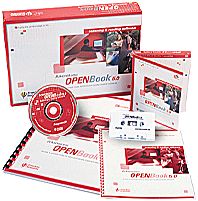 Suppose a lightweight portable device could instantaneously read out loud each word of a book as the device was pointing out the words. The device would be similar to the supermarket scanners used to read barcodes and automatically record the price of merchandise. Only, this new gadget would scan words and automatically read them aloud. That way, I could go to a library or a bookstore, take any book off-the-shelf and be able to read it immediately. The words wouldn’t have to be in a digital format. Such a device could not help the blind or people with motor skill problems, but it would aid many others with reading disabilities.
Suppose a lightweight portable device could instantaneously read out loud each word of a book as the device was pointing out the words. The device would be similar to the supermarket scanners used to read barcodes and automatically record the price of merchandise. Only, this new gadget would scan words and automatically read them aloud. That way, I could go to a library or a bookstore, take any book off-the-shelf and be able to read it immediately. The words wouldn’t have to be in a digital format. Such a device could not help the blind or people with motor skill problems, but it would aid many others with reading disabilities.
A primitive version of such a device already exists. Selling for $279, including an earphone and adapter for external loudspeakers, it is called the Reading Pen II and put out by Wizcom Technologies Ltd. I bought this electronic pen some time ago. Unfortunately, however, it failed to do what I hoped, and I summed up the big problems in a note to Wizcom.
First, the Reading Pen II was uncomfortable to use for long periods of time. Second, the pen reads too slowly, and I could not speed it up with an adjustment. Third, the pen did not have a feature to automatically read words after they were scanned; instead a reader would have to press a series of commands each time after scanning a word or a line. Fourth and last, the electronic pen would stop reading each time it could not recognize a word–instead of just saying out loud each letter as the program OpenBook does. This made the Reading Pen II extremely tedious to use, at least for me.
With just simple technological changes, however, Wizcom could make the pen more useful. Let’s say it could be developed either as a stand-alone item or something that could be an attachment to a laptop or palmtop computer. I personally would prefer a device being an attachment to a palmtop computer; that way, Wizcom could include more refinements and let users customize the pen better, such as by speeding up the reading rate.
A pen device like the one I have described would not take away the need for e-books or the advantages of a national digital library. But it would help people with reading disabilities be able to compete better–even before all books and periodicals are available on digital format.
No one I’ve spoken to thinks the reading device I have described is either technically infeasible or too costly. What we the public should do is plead that Wizcom or some other company make such a product. There is actually quite a sizable market for this new kind of device.


















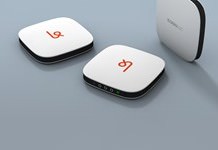
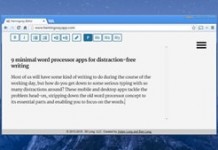
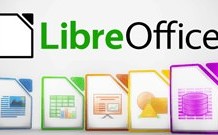
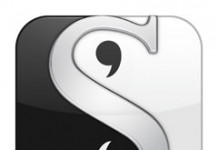











I’ve been looking for a device that will assist my mother who is legally blind from macular degeneration (she has peripheal vision only). When I first heard about the talking pen idea, I thought it would be great for her to “read” her mail, directions, etc.
Do you think it would be OK for her?
Thanks for any insight or suggestions.
Hi, Donna. I’ll forward your note to Tom Peters, a specialist in reading-related devices for the visually impaired. – David
What a great idea. My Dad is blind and I would love to get a reading pen for him. Are there any new types available?
Jim (and others), you can reach Tom Peters at infoNOSPAMPLEASEtapinformation.com. Just stick the @ in its usual place and drop the stuff in caps. Best of luck helping out your father. David
I read an article in the Los Angeles Times 2 – 3 weeks ago about a woman with learning disabilities whose college bought a machine for her that would scan her textbooks and then read them outloud to her.
Do you know a machine that could do this?
Response to Caroline Carson: Inventor Ray Kurzweil and the US National Federation of the Blind developed a device recently called the K-NFB reader that is relevant to your question. Here is a description:
Here is a link to the K-NFB website and here is a link to a post by Branko Collin on the Teleread blog about the device.
Any other TeleBlog folks who can help Caroline? Meanwhile big thanks to Garson. David